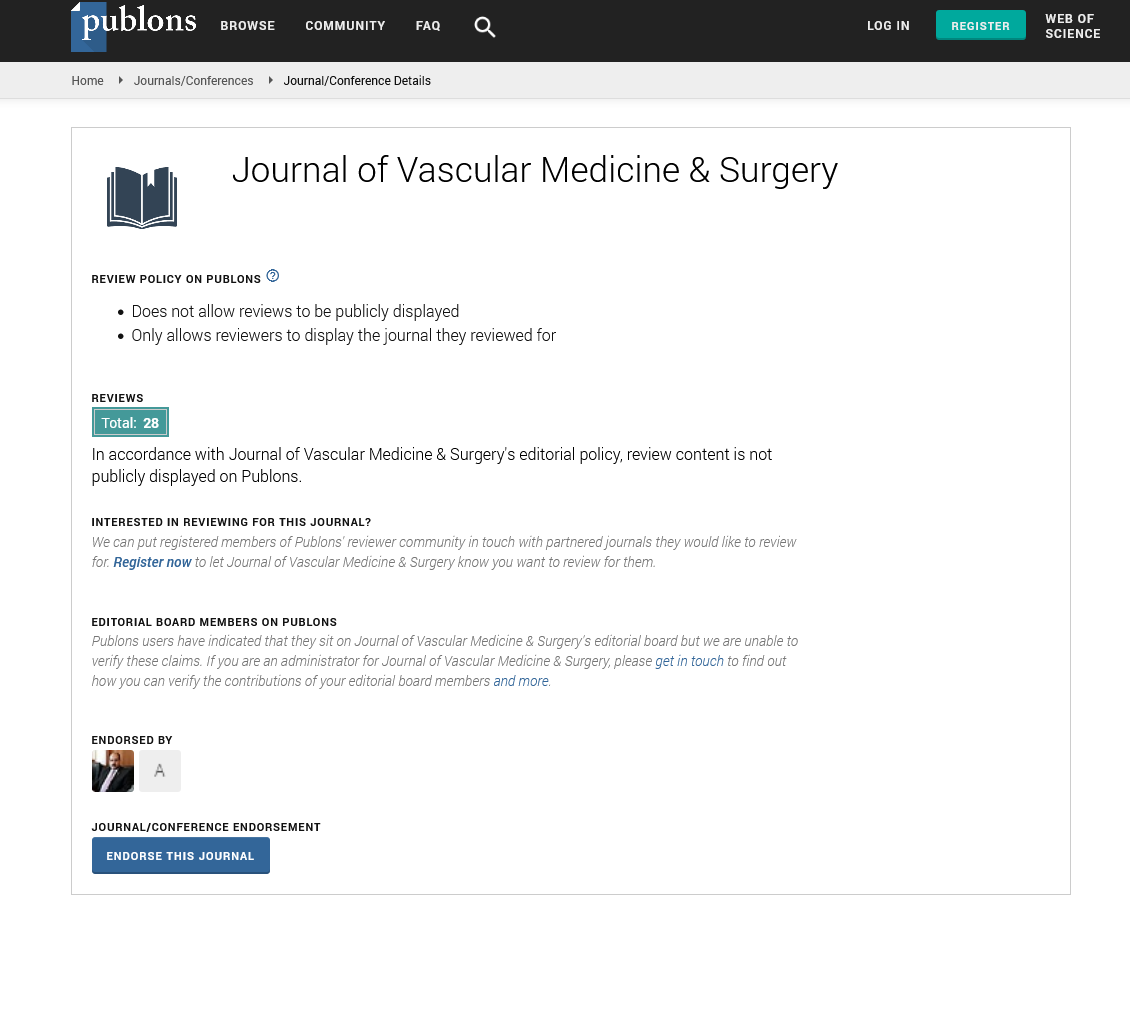Indexed In
- Open J Gate
- Academic Keys
- RefSeek
- Hamdard University
- EBSCO A-Z
- OCLC- WorldCat
- Publons
- Euro Pub
- Google Scholar
- SHERPA ROMEO
Useful Links
Share This Page
Journal Flyer

Open Access Journals
- Agri and Aquaculture
- Biochemistry
- Bioinformatics & Systems Biology
- Business & Management
- Chemistry
- Clinical Sciences
- Engineering
- Food & Nutrition
- General Science
- Genetics & Molecular Biology
- Immunology & Microbiology
- Medical Sciences
- Neuroscience & Psychology
- Nursing & Health Care
- Pharmaceutical Sciences
Abstract
Extracranial-Intracranial Bypass Surgery for Symptomatic Middle Cerebral Artery Occlusion-How to Prevent Intraoperative Complications
Chun-Chung Chen, Chun Wei Tseng, Charlton Chen-Ting Cheng, Chih-Hsiu Tu, Chun-Jen Chang, Yu-Chung Juan, Jeng-Hung Guo, Der-Yang Cho, Wei-Lin Hsu and Chien-Tung Yang*
This retrospective, single-center study, conducted without randomization, aimed to evaluate the management of patients with symptomatic total occlusion of the Middle Cerebral Artery (MCA). The study focused on the effectiveness of Extracranial–Intracranial (EC–IC) bypass as a treatment for those with atherosclerotic MCA total occlusion, ischemic symptoms such as Transient Ischemic Attacks (TIAs), or inadequate cerebral hemodynamics despite maximal medical therapy. A total of 94 patients, who met specific criteria including experiencing ischemic syndromes (e.g., TIA) associated with atherosclerotic MCA total occlusion confirmed by radiological assessment and showing an insufficient response to optimal medical therapy, were included. This insufficiency was indicated by the potential recurrence of TIAs or ischemic stroke despite maximal medical treatment. Postoperatively, three patients experienced Intracerebral Hemorrhage (ICH), while none suffered from an ischemic stroke either within the first 30 days or over the following 24 months. Post-operative imaging, which included MRI (MR angiography) or four-vessel digital subtraction angiography, demonstrated a 100% patency rate in the Superficial Temporal Artery-Middle Cerebral Artery (STA-MCA) anastomosis. The 30-day ischemic stroke rate post-EC-IC bypass in our series was 3.1%, and this rate persisted at 3.1% even after 24 months in patients with atherosclerotic MCA total occlusion and hemodynamic impairment. The lower postoperative stroke rate can likely be credited to our comprehensive perioperative management, including the continuation of antiplatelet therapy and rigorous blood pressure control. However, to firmly establish the effectiveness of the EC-IC bypass as a viable intervention, larger-scale studies are necessary.
Published Date: 2025-10-17; Received Date: 2024-04-22

